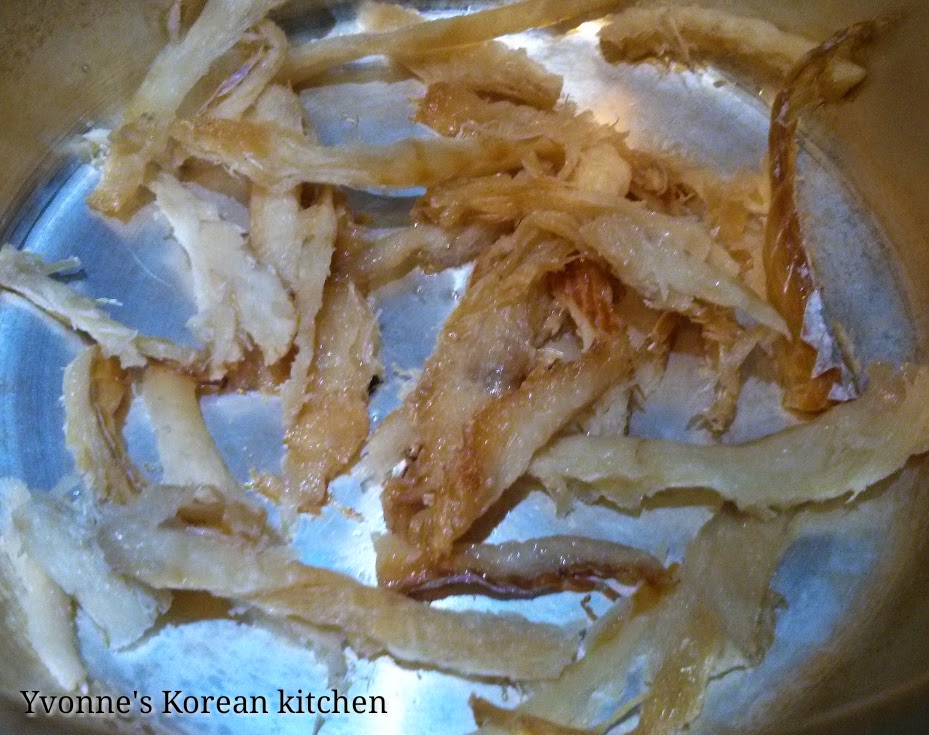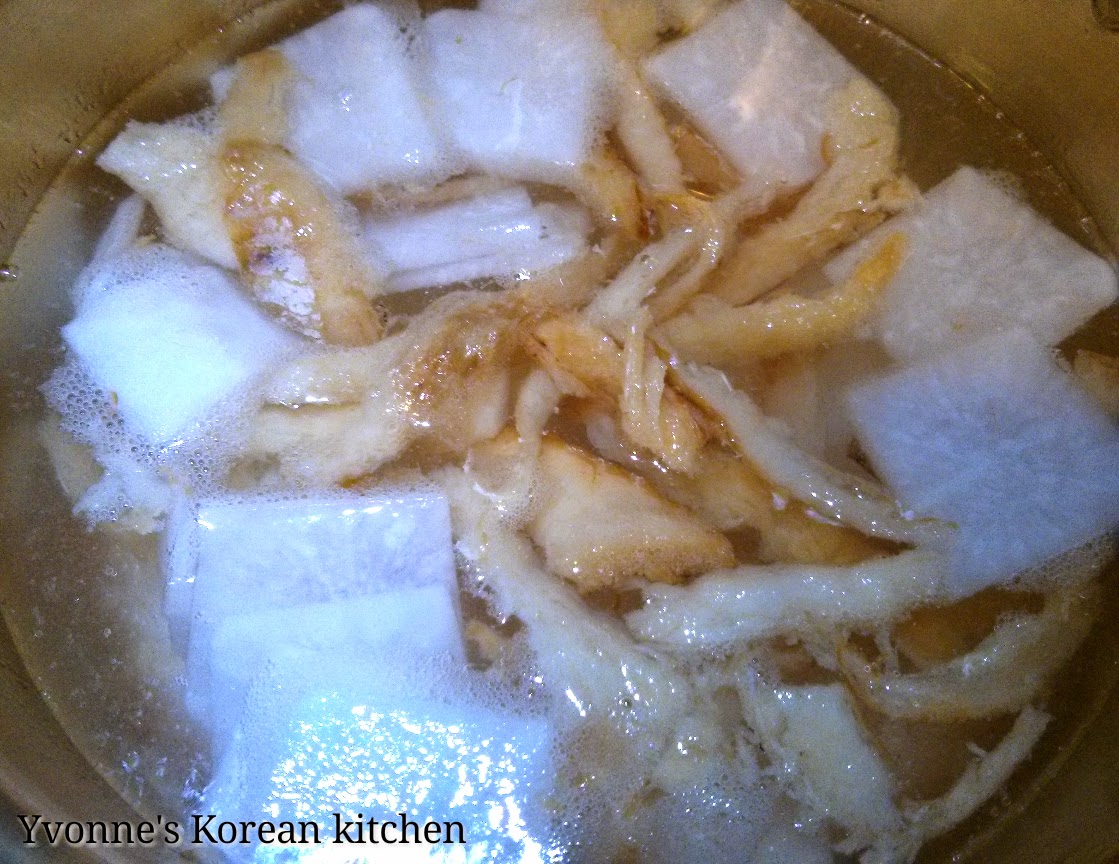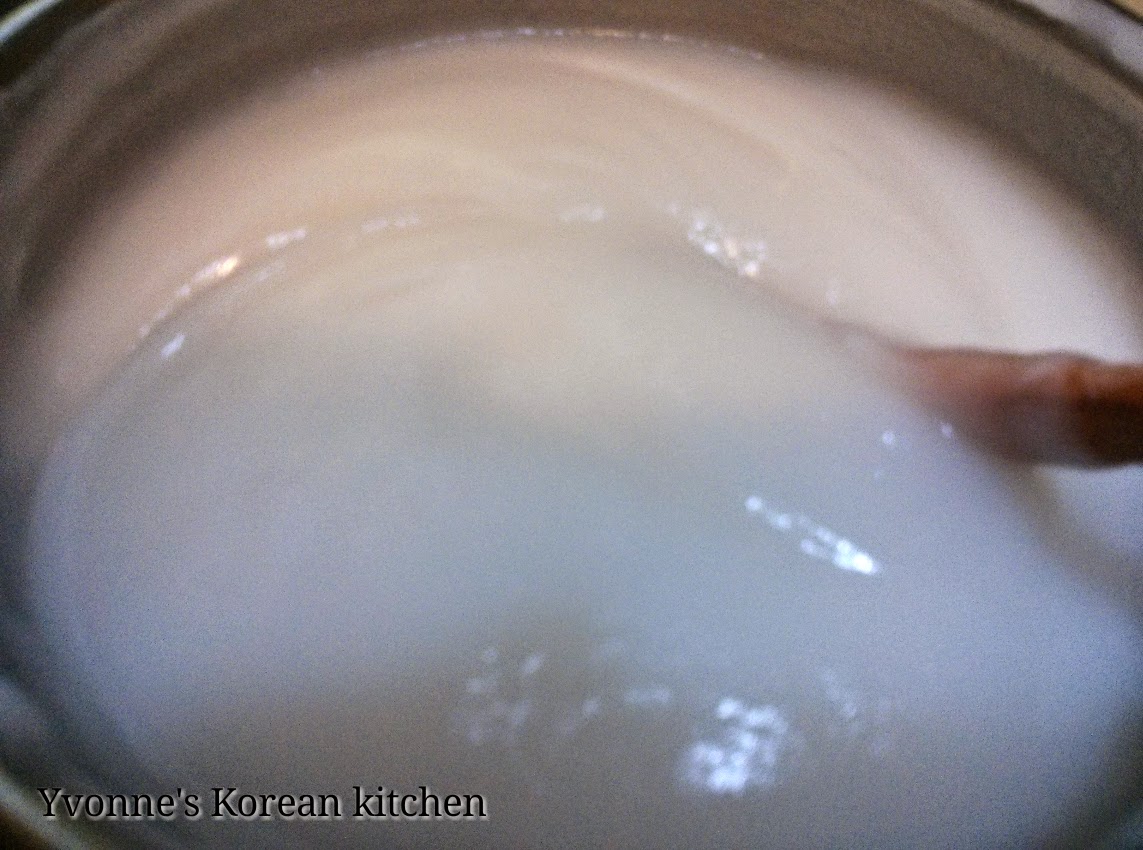Kimchi Dueji Mari Jjim (Korean Kimchi Pork Rib Roll)
Kimchi, the national food of Korea. It's not only serve as side dish but also use in many other main dish especially in making stew or soup. When the kimchi well fermented, it taste rather too sour to be eaten as side dish. Therefore, many Korean household use well fermented kimchi to make stew like kimchi stew, kimchi fried rice, kimchi pancake and etc.
My mom were first introduced to kimchi after I met my husband but she doesn't like it =.=" She cannot take fermented kimchi as she claims that it's too sour to her taste but she loves this dish - Kimchi Dueji Mari Jjim! She loves the spicy and sour taste of the kimchi with pork ribs that also goes very well with a hot bowl of rice~ Whenever she come to stay with us, I will make this dish :)
Serving: 2 person
Ingredients:
12 Pork Ribs (cut about 6cm length)
12 leaves of well fermented Kimchi
1/2 medium size Onion (Sliced)
About 8 cm length of Leek (Sliced)
1 liter Water
1 tbsp Sesame oil
Sliced green chilli for garnish
Sauce
1 tbsp Gochujang (Korean chilli pepper paste)
1/2 tbsp Gochugaru (Korean chilli pepper powder)
4 tbsp Kimchi juice
1 tbsp Minced garlic
1 tbsp Honey (or 1/2 tbsp sugar)
Step by step photos:
- Wash and soak pork ribs for 30 minutes in water to get rid of the blood.
- Drain the soaking water, and set aside.
- Prepare the sauce by mixing gochujang, gochugaru, minced garlic, honey and kimchi juice. Set aside.
- Take a leaf of well fermented kimchi and put in a plate, place a piece of pork rib at the end of the kimchi leave (body part) and roll it up like a spring roll.
- Keep repeating for all the pork ribs.
- Prepare a pot. Place all the kimchi pork rib wraps in the pot.
- Add in sliced onion and leek.
- Add in the sauce and water. Boil it over high heat for 10 minutes. After 10 minute, turn to low heat for another 40 minutes to 1 hour or until the meat is cooked and soft with lid on.
- Off the heat, drizzle some sesame oil and garnish with some sliced chilli and serve~ ^^
Tips:
* Adjust the spicy level by adjusting the gochugaru amount.
** Adjust the sour level by adjusting the honey/sugar amount.





























































